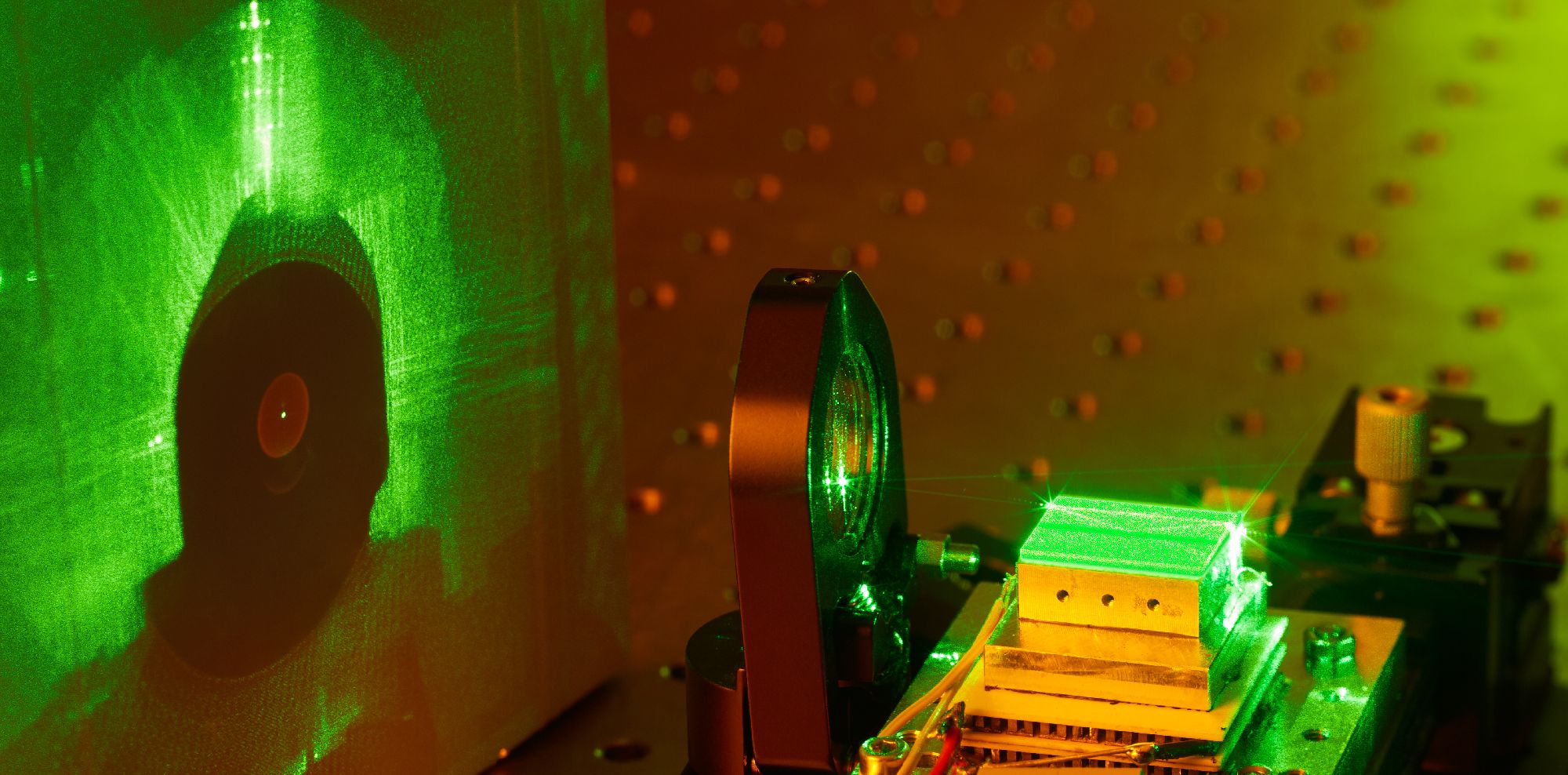The field »Quantum Imaging« focuses on the use of non-classical light states for new methods in imaging and spectroscopy. The main objective of the Fraunhofer »Lighthouse Project« QUILT is to make spectral and image information from the wavelength ranges terahertz, mid-infrared and ultraviolet measurable with silicon-based detectors and cameras using entangled photon pairs with strong wavelength spreading.
Infrared spectroscopy with visible photons
One of the most important methods for the chemical analysis of molecules and organic compounds is infrared spectroscopy. This method usually requires an infrared light source and an infrared detector. However, compared to detectors for the visible or near-infrared spectral range, infrared detectors have a higher dark noise, are technologically more complex and expensive.
Using a nonlinear interferometer, we can detect the spectral information from the mid-infrared with visible light. For this purpose, entangled photon pairs are generated, in which one of the light quanta is in the visible spectral range and one in the mid-infrared range. In an interferometer setup, the light beams are superimposed in such a way that the interaction of the infrared photons with an investigated sample can be measured in the interference pattern of the visible photons. This is only possible because of the quantum mechanical nature of the entangled photons.
From basic research to application demonstration
Within the »QUILT« project, Fraunhofer IPM develops quantum spectrometers in the mid-infrared (3-5 µm) and the so-called fingerprint range (8-12 µm). In recent work, we demonstrated a novel method for infrared spectroscopy with visible light in analogy to the measuring principle of a Fourier transform infrared spectrometer.
At Fraunhofer IPM we benefit from our expertise in the field of nonlinear optical materials, which serve as a source for the entangled photons. During system development, our many years of experience in spectroscopic analysis help us incorporate the requirements of measurement technology in realistic application scenarios.
